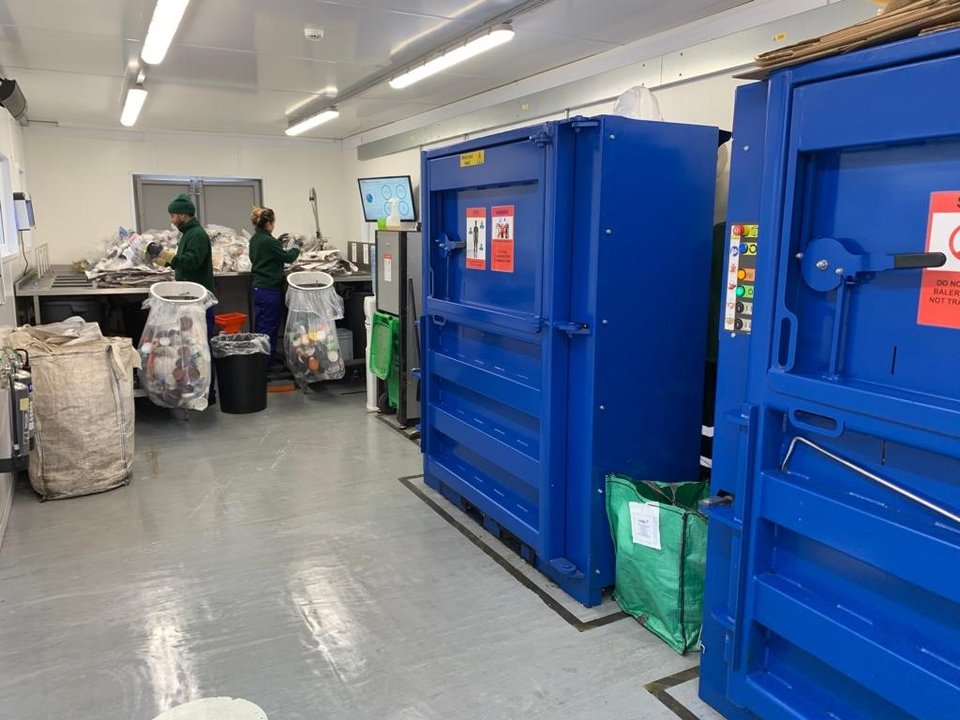Accessibility
Accelerating accessibility: improving access to UK railways
Train guards:
How cybersecurity is helping rail operators keep on track
There have been unified calls for the UK Government to introduce legislation to guarantee accessibility on all rail journeys in Britain by 2030. Jasleen Mann looks into the matter.
T
he construction of Britain’s rail network began 200 years ago, during a time when accessibility was very much an afterthought in society. However, times change and the drive for more accessible railways has gained significant momentum over recent years.
There are a host of different organisations campaigning for more accessible rail travel in the UK, from the Campaign for Level Boarding to Transport for All, as well as health and welfare charity Leonard Cheshire.

Aerial view of the derailment. Image: UK Government
Slow progress
Gemma Hope, director of policy at Leonard Cheshire, says: “41% of stations in Britain don’t have step-free access. Without significant progress, the system won’t be accessible until 2070. Accessibility improvements are going at a very slow pace, and disabled people are hugely impacted as a result.
“A lack of access to transport takes away disabled people’s opportunities to socialise and go to work. And in some cases, they have to travel additional distances just to get from A to B due to a lack of accessibility.”
Research conducted by Leonard Cheshire found that 22% of disabled people feel isolated by inaccessible transport, while 21% say that inaccessible transport negatively impacts their mental health. In addition, 18% of disabled people say that inaccessible transport has stopped them from keeping active and 15% state it has stopped them from going out with family or friends.
Leonard Cheshire calls for the UK Government to commit to making rail travel and public transport fully accessible by 2030, through legislation and funding commitments. The Department for Transport’s (DfT) Inclusive Transport Strategy, published in 2018, aimed to achieve equal access for disabled people by 2030.
Progress is painfully slow, despite Access for All being in operation for over 20 years.
Accessibility changes can be a complex task, as they involve the train operator, Network Rail, and Local Authorities. While Leonard Cheshire acknowledges that Access for All, the major source of government funding for improvements to railway stations, does not address disabled people’s needs to a great extent, the scheme is viewed as an important step.
Hope says: “Schemes like Access for All are so important, as it provides a centralised pit of funding from the DfT to pay for more complex works.
“The solutions will vary from station to station, but the current rate of completion means that progress is painfully slow, despite Access for All being in operation for over 20 years.”
Increasing equality and it boosting the economy
Leonard Cheshire found that the total cost of making the entire railway network step-free would be between £2bn and £6bn, with a central estimate of £4bn – amounting to just 1-3% of total transport capital investment between 2020 and 2030.
It is estimated that around 51,000 people with work-limiting disabilities would gain employment with full accessibility benefits.
Leonard Cheshire’s research suggests that these developments could offer the Exchequer benefits of £450m per year and provide the country with an economic output boost of £1.3bn.
Hope says: “While cost is a contributing factor, the cost of making the entire network step-free is a smaller investment than some of the other large scale transport projects we’re seeing, like HS2.
“Accessible travel goes beyond step-free – it also means better disability training for transport employees, clear signage and written announcements for deaf or hard of hearing people, and accessibility within train carriages, such as accessible toilets, appropriate audio and visual communication, and wheelchair spaces.”

Staff sort waste at Brighton station. Credit: The Green Block
Organisations continue to support disabled passengers
Software company Whoosh has created a dashboard which is a QR code on the back of train seats that enables communication with a larger number of people.
Whoosh CEO Ed Caldecott, says: “As a society, we all have different needs. From a parent travelling with two kids in arms and a toddler to someone using a wheelchair. It is about trying to meet those complex needs with a system that is easy to use.”
Currently, passengers with disabilities are expected to tell the transport operator at least five hours before they travel, although South West Rail rolled out improvements for passengers last year, potentially cutting this time down to just 10 minutes. Whoosh aimed to create a real-time solution that would allow station employees to identify what journey the passenger is on so that they can meet the passenger at the station.
Coordinating trained staff on trains and in stations can be challenging, but it is expected that technology will improve this situation. “I think the situation is promising. Technology can be extremely useful with giving us faster communication,“ Caldecott says
“If you think about current solutions they are narrow in their focus and assume that accessibility issues apply to a small part of the population. When the approach for everyone gets broader this will help more people.”
We need to see clear targets and timelines put in place in order to see real change for disabled people.
Elsewhere, experts at the University of Amsterdam are currently developing technology that enables last-minute announcements to be translated into sign language using AI. These announcements – such as last-minute platform alterations, delays, or cancellations – can cause huge problems for deaf or hard of hearing passengers.
“Governments, companies, and anyone providing services should take these passengers into account, certainly governments. If they’re providing a service that is paid out of tax money that is also paid by deaf people, then they should have equal access to those services,” Dr Floris Roelofsen, founder of Signlab, previously told Future Rail.
In May 2021, the Williams-Shapps Plan for Rail outlined a new national accessibility strategy and the National Disability Strategy acknowledged the need to improve railway accessibility.
“We hope the promise of dedicated funding for accessibility improvements means significant investment, but we still need to see a clear blueprint of how this will be implemented to ensure the goal is reached by 2030. We need to see clear targets and timelines put in place in order to see real change for disabled people,” says Hope.
Main image: The first Fuxing bullet train prepares to leave the Lhasa Railway Station on its inaugural journey. Credit: Dong Zhiwen/VCG via Getty Images